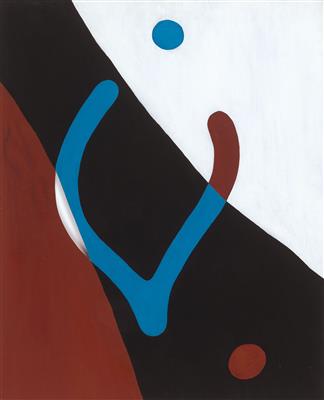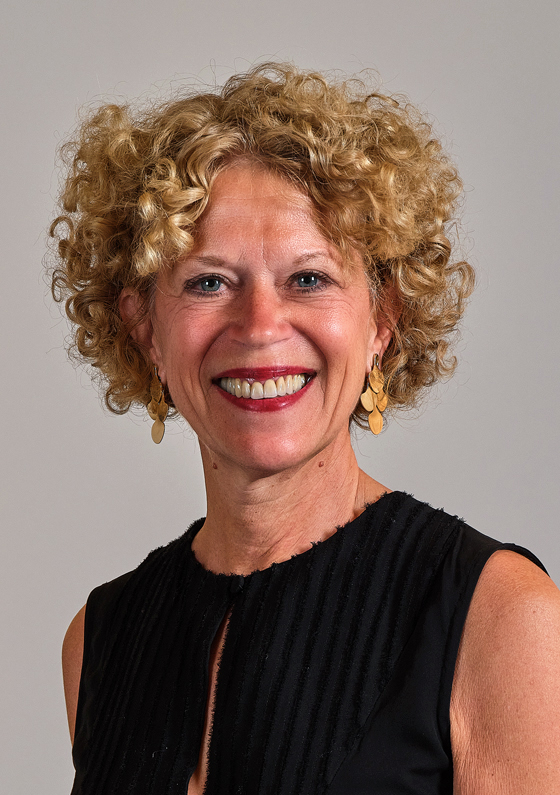Hans (Jean) Arp *

(Strasbourg 1886–1966 Basel)
Fronde et nombrils (Sling and navels), 1926, signed on the reverse H Arp, oil on cardboard, cut out, 61.5 x 50 cm, framed
Provenance:
Foundation Hans Arp and Sophie Taeuber-Arp, e. V., Rolandseck
Collection Sal Oppenheim, Cologne
Exhibited:
Paris, Galerie Denise René, Hommage à Jean Arp, June–July 1974
Mont-de-Marsan, Musée Despiau-Wlérick, 1977 (label)
London, Hayward Gallery, Dada and Surrealism Reviewed, 11 January – 27 March 1978
Madrid, Museo Espanol de Arte Contemporáneo, Jean Arp, Esculturas, relieves, obra sobre papel, tapices, 25 February–15 April 1985
Remagen, Foundation Hans Arp and Sophie Taeuber-Arp e. V., Arp Museum Bahnhof Rolandseck, 25 May–20 August 1986, Zürich, Kunsthaus 5 July–7 September 1986, Stadt Kindberg, Galerie K Walter Buchebner Gesellschaft, 24 October – 22 November 1986
Bern, Kunstmuseum Bern, 1988, Remagen, Foundation Hans Arp and Sophie Taeuber-Arp e. V., Arp Museum Bahnhof Rolandseck, 1988–89, Wuppertal, Von der Heydt Museum, 1989
Künzelsau, Museum Würth, Hans Arp. Eine Übersicht. Arbeiten aus den Jahren 1912–1965, 8 September – 31 December 1994
Literature:
Bernd Rau (ed.): Hans Arp – Die Reliefs. Oeuvre-Katalog, Stuttgart 1981, p. 55, cat. rais. no. 100, ill.
Hans Bolliger, Guido Magnaguagno, Christian Witzig (ed): Hans Arp. Zum 100. Geburtstag (1886–1966); ein Lese- und Bilderbuch, Zürich 1986, no. 101 (ill.).
Sandor Kuthy (ed.): Sophie Taeuber-Hans Jean Arp: Künstlerpaare–Künstlerfreunde, Bern 1988, p. 121, no. 48 (ill.)
Serge Fauchereau, Arp, Recklinghausen 1994, p. 43, no. 23, ill.
In spring 1926, Hans Arp and Sophie Taeuber settled in Strasbourg. There they worked with Theo van Doesburg on a major commission for the extension and interior design of the „Aubette“ entertainment complex. They created numerous reliefs and paintings in which Arp deepened the design principle of contrasting mass and emptiness until 1929.
Around 1915, Arp developed a method in graphic art of letting positive and negative values react to each other, which finally culminated in the interchanging of the two functions in the ink drawings from the Dada period. In these works, positive forms turned into negative forms. He drew with pencil in loosely curved, irregular strokes, and when the drawing was finished, he painted the areas evenly with black ink as a precursor to the blank forms.
The cutout, which is located in the middle of the picture on the left edge of the slingshot in „Slingshot and Navel“, breaks through the cardboard surface and reveals the surface behind it as a relief ground. When the viewer changes position, the drop shadow moves the space behind it. This is an anticipation of the later sculpture, in which the space in between is activated by empty forms.
The process of replacing a positive value with a negative value is a pillar of Arp‘s design principles, together with the wave-like in and out sweeping limitation of the form. A further principle is the layering and sequencing of different elements. In the composition of these elements, he strove to discover new layers of meaning and image and to use them as creative forces. He rejected the faithful reproduction of nature in favour of allusions to natural phenomena and processes. The asymmetrical movements of his lines and forms - whether sensuously curved, sinuous or concentric, suggest the presence of branches, leaves and stones. But more importantly, they evoke the natural cycles of germination, growth, maturation, decay and erosion.
A biomorphic grasp of his elements opened up a second path to the ambiguity of forms for Arp. The organic process of metamorphosis became his model. In 1917, through intensive observation of nature, he succeeded in uniting various aspects of natural cycles and growth processes in oval and amoeba-like forms. A large number of the reliefs from 1926 also depict eyes, heads, eggs, germs and dots, derived from Arp‘s predilection for the navel. The circle is the only geometric form that fascinated Arp to the extent that it transcends the problem of geometry and non-geometry. As a modified basic form, it has determined Arp‘s pictorial work since his breakthrough around 1915; the symbol of the navel as the symbol of the outer circular form as well as the inner centre runs through Arp‘s entire oeuvre. The navel has always been a symbol of the transformation and growth of the body and shaped Arp‘s formal language until his death.
Expert: Dr. Petra Maria Schäpers
 Dr. Petra Maria Schäpers
Dr. Petra Maria Schäpers
petra.schaepers@dorotheum.de
30.11.2021 - 18:00
- Odhadní cena:
-
EUR 280.000,- do EUR 360.000,-
Hans (Jean) Arp *
(Strasbourg 1886–1966 Basel)
Fronde et nombrils (Sling and navels), 1926, signed on the reverse H Arp, oil on cardboard, cut out, 61.5 x 50 cm, framed
Provenance:
Foundation Hans Arp and Sophie Taeuber-Arp, e. V., Rolandseck
Collection Sal Oppenheim, Cologne
Exhibited:
Paris, Galerie Denise René, Hommage à Jean Arp, June–July 1974
Mont-de-Marsan, Musée Despiau-Wlérick, 1977 (label)
London, Hayward Gallery, Dada and Surrealism Reviewed, 11 January – 27 March 1978
Madrid, Museo Espanol de Arte Contemporáneo, Jean Arp, Esculturas, relieves, obra sobre papel, tapices, 25 February–15 April 1985
Remagen, Foundation Hans Arp and Sophie Taeuber-Arp e. V., Arp Museum Bahnhof Rolandseck, 25 May–20 August 1986, Zürich, Kunsthaus 5 July–7 September 1986, Stadt Kindberg, Galerie K Walter Buchebner Gesellschaft, 24 October – 22 November 1986
Bern, Kunstmuseum Bern, 1988, Remagen, Foundation Hans Arp and Sophie Taeuber-Arp e. V., Arp Museum Bahnhof Rolandseck, 1988–89, Wuppertal, Von der Heydt Museum, 1989
Künzelsau, Museum Würth, Hans Arp. Eine Übersicht. Arbeiten aus den Jahren 1912–1965, 8 September – 31 December 1994
Literature:
Bernd Rau (ed.): Hans Arp – Die Reliefs. Oeuvre-Katalog, Stuttgart 1981, p. 55, cat. rais. no. 100, ill.
Hans Bolliger, Guido Magnaguagno, Christian Witzig (ed): Hans Arp. Zum 100. Geburtstag (1886–1966); ein Lese- und Bilderbuch, Zürich 1986, no. 101 (ill.).
Sandor Kuthy (ed.): Sophie Taeuber-Hans Jean Arp: Künstlerpaare–Künstlerfreunde, Bern 1988, p. 121, no. 48 (ill.)
Serge Fauchereau, Arp, Recklinghausen 1994, p. 43, no. 23, ill.
In spring 1926, Hans Arp and Sophie Taeuber settled in Strasbourg. There they worked with Theo van Doesburg on a major commission for the extension and interior design of the „Aubette“ entertainment complex. They created numerous reliefs and paintings in which Arp deepened the design principle of contrasting mass and emptiness until 1929.
Around 1915, Arp developed a method in graphic art of letting positive and negative values react to each other, which finally culminated in the interchanging of the two functions in the ink drawings from the Dada period. In these works, positive forms turned into negative forms. He drew with pencil in loosely curved, irregular strokes, and when the drawing was finished, he painted the areas evenly with black ink as a precursor to the blank forms.
The cutout, which is located in the middle of the picture on the left edge of the slingshot in „Slingshot and Navel“, breaks through the cardboard surface and reveals the surface behind it as a relief ground. When the viewer changes position, the drop shadow moves the space behind it. This is an anticipation of the later sculpture, in which the space in between is activated by empty forms.
The process of replacing a positive value with a negative value is a pillar of Arp‘s design principles, together with the wave-like in and out sweeping limitation of the form. A further principle is the layering and sequencing of different elements. In the composition of these elements, he strove to discover new layers of meaning and image and to use them as creative forces. He rejected the faithful reproduction of nature in favour of allusions to natural phenomena and processes. The asymmetrical movements of his lines and forms - whether sensuously curved, sinuous or concentric, suggest the presence of branches, leaves and stones. But more importantly, they evoke the natural cycles of germination, growth, maturation, decay and erosion.
A biomorphic grasp of his elements opened up a second path to the ambiguity of forms for Arp. The organic process of metamorphosis became his model. In 1917, through intensive observation of nature, he succeeded in uniting various aspects of natural cycles and growth processes in oval and amoeba-like forms. A large number of the reliefs from 1926 also depict eyes, heads, eggs, germs and dots, derived from Arp‘s predilection for the navel. The circle is the only geometric form that fascinated Arp to the extent that it transcends the problem of geometry and non-geometry. As a modified basic form, it has determined Arp‘s pictorial work since his breakthrough around 1915; the symbol of the navel as the symbol of the outer circular form as well as the inner centre runs through Arp‘s entire oeuvre. The navel has always been a symbol of the transformation and growth of the body and shaped Arp‘s formal language until his death.
Expert: Dr. Petra Maria Schäpers
 Dr. Petra Maria Schäpers
Dr. Petra Maria Schäpers
petra.schaepers@dorotheum.de
|
Horká linka kupujících
Po-Pá: 10.00 - 17.00
kundendienst@dorotheum.at +43 1 515 60 200 |
| Aukce: | Moderní |
| Typ aukce: | Sálová aukce s Live bidding |
| Datum: | 30.11.2021 - 18:00 |
| Místo konání aukce: | Wien | Palais Dorotheum |
| Prohlídka: | Online |
Všechny objekty umělce
